| By: Paul S. Cilwa | Viewed: 4/28/2024 Posted: 12/22/2023 |
Page Views: 461 | |
| Topics: #AtomicClock #Science #Time #Timekeeping | |||
| People don't appreciate the developmental magnitude of the entire world using one common, utterly accurate clock. | |||

I don't think people appreciate the developmental magnitude of the entire world using one common, utterly accurate clock. While early human groups recorded the phases of the Moon some 30,000 years ago in their cave paintings, we have been able to accurately measure a minute only for the past 400 years. Yet our entire modern world depends on accurate and universal agreement on time down to an incredibly small fraction of a second.
The earliest historical record suggesting an awareness of time as something to be measured dates back to prehistoric times. Obviously a day is a period of time that can be measured, but the Sun does the measuring for us; and that applies to all species. But the Moon was more important to them, because a set of 13 full moons just about equaled a year. And, if you are a hunter-gatherer, recognizing and being able to predict the pace of the seasons is a major survival boost.
How do we know early humans did this? Easy; they left their calendars behind on cave walls. It just took us moderns awhile to figure out what they were.
For example, paintings of aurochs, the wild ancestors of modern cattle, in Spain had four dots on them, indicating a mating season four months after the Paleolithic spring. The seasonal information drawn on the walls could be broken down into 13 periods, which coincided with the lunar calendar year.
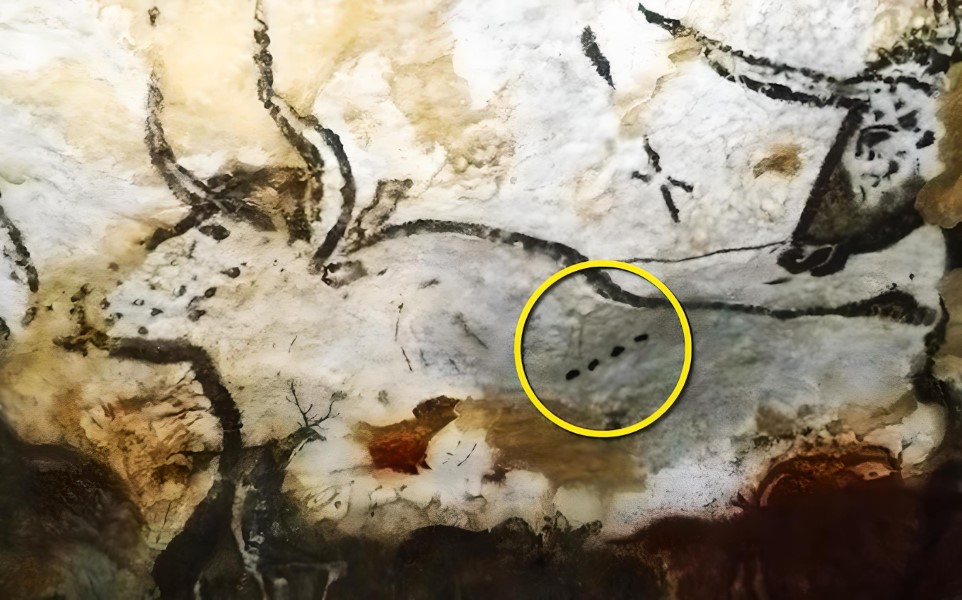
In addition, certain marks, such as Y-shaped symbols, held specific information, such as the beginning of the birthing season for a given animal. This suggests that early humans used the moon as a timekeeper, with evidence of lunar timekeeping dating back as early as 25,000 to 35,000 years before the present.
The first timekeeping devices were probably natural materials lost to the ages, but the ancient Egyptians were the first to leave records of their timekeeping methods. They invented the first water clocks and sundials more than 3,500 years ago.
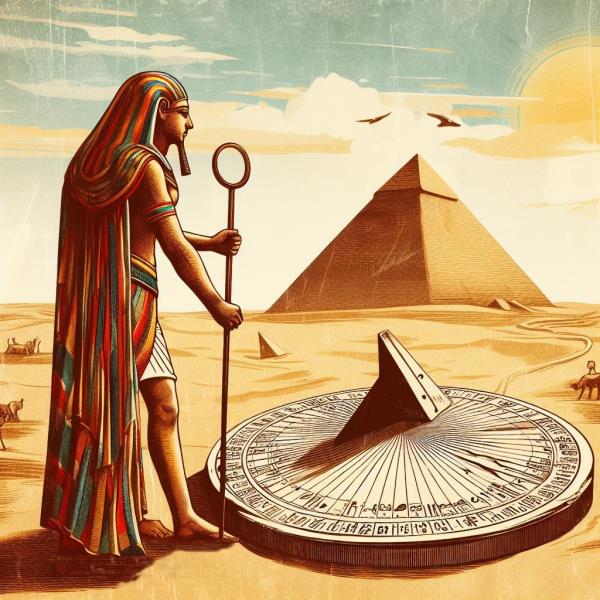
The oldest sundial on record came from Egypt and was made around 1500 BCE. It consisted of a simple upright stick and a roughly semicircular base divided into 12 pie-shaped sections. The oldest surviving water clocks were found in Egypt and Babylon, and the earliest of these date to around 1500 BCE.
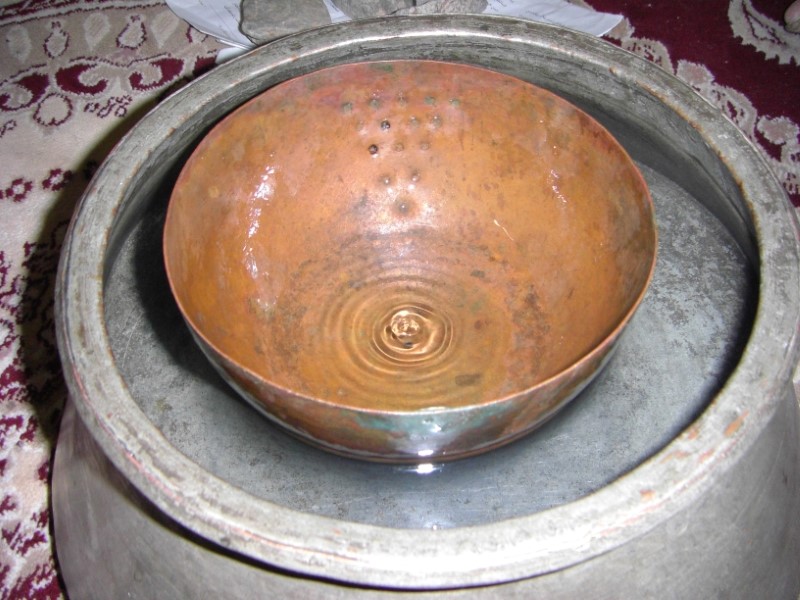
A water clock, also known as a clepsydra, is an ancient timekeeping device that measures time by the regulated flow of water from a container. There are two types of water clocks: inflow and outflow.
In an outflow water clock, a container is filled with water, and the water is drained slowly and evenly out of the container. This container has markings that are used to show the passage of time. As the water leaves the container, an observer can see where the water is level with the lines and tell how much time has passed.
An inflow water clock works on a similar principle, but instead of measuring the water as it leaves the container, it measures the water as it enters the container.
The basic principle behind a water clock is that water flows from a container with a small hole at a constant rate and as the water level drops, it indicates the passage of time.
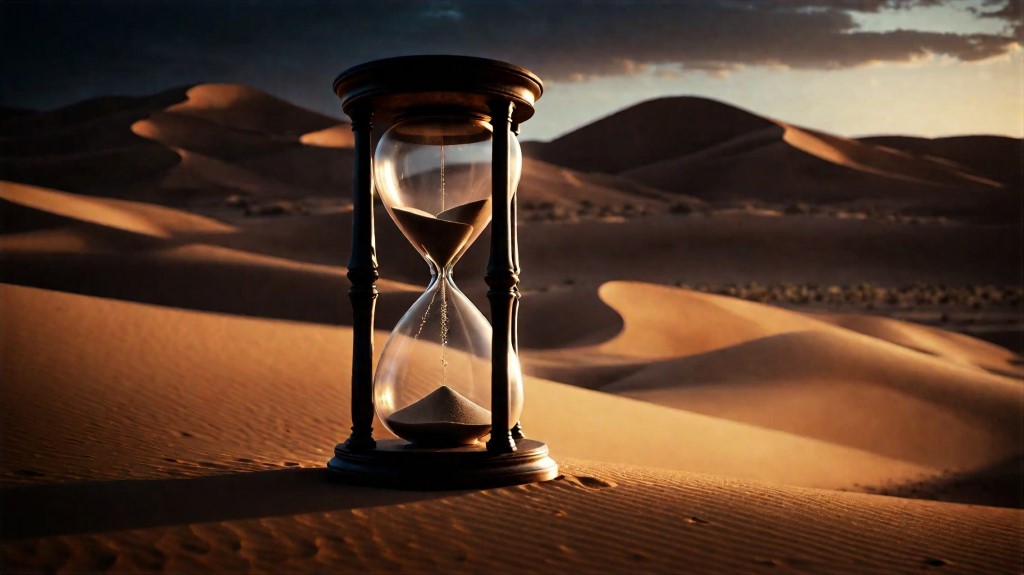
The hourglass, also known as a sandglass, sand timer, or sand clock, is believed to have been invented around the 8th century, possibly by a monk named Luitprand, at the cathedral in Chartres, France. However, all the evidence points to the hourglass being invented a couple of centuries earlier, during that era’s great advances in maritime navigation. It is widely believed that they were invented for the use of sailors to calculate the time and distance traveled. This dating gives the hourglass roughly enough time to become widely used and to enter the material record around 1300, with the first visual proof, in a fresco painted by Ambrogio Lorenzetti in 1338.
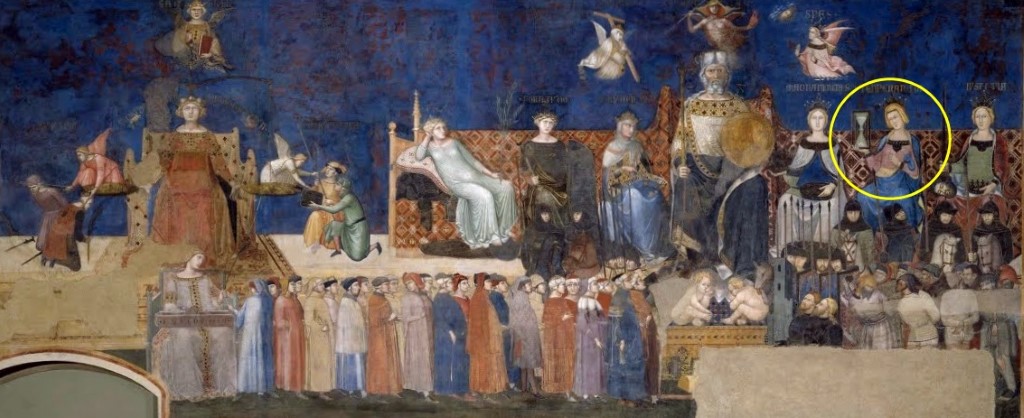
The next major advancement in measuring time after the hourglass was the development of mechanical clocks in medieval Europe. These clocks were a major breakthrough, with one notably designed and built by Henry de Vick around 1360, which established basic clock design for the next 300 years.
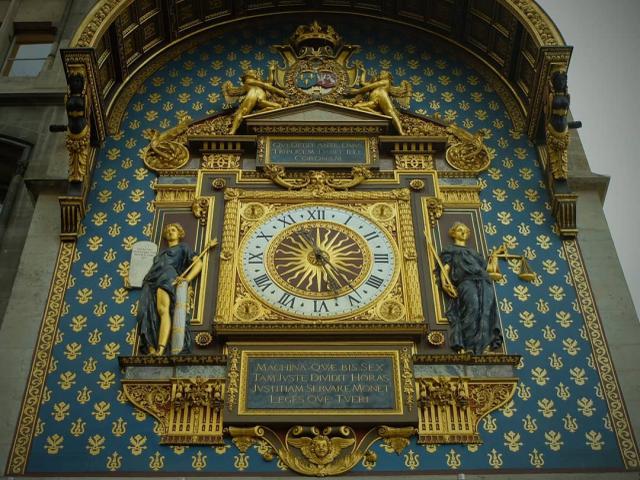
Minor developments were added, such as the invention of the mainspring in the early 15th century, which allowed small clocks to be built for the first time. The next major improvement in clock building, from the 17th century, was the discovery that clocks could be controlled by harmonic oscillators…in other words, pendulums.
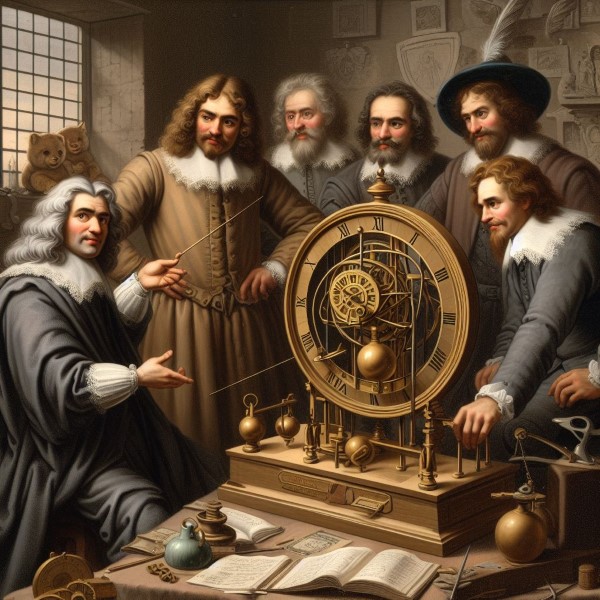
The pendulum clock, designed and built by Dutch polymath Christiaan Huygens in 1656, was so much more accurate than other kinds of mechanical timekeepers that few verge and foliot mechanisms have survived. Other innovations in timekeeping during this period include inventions for striking clocks, the repeating clock, and the deadbeat escapement.
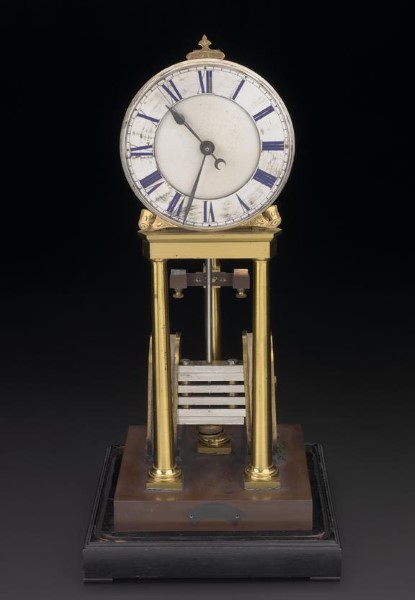
The first electric clock was designed by the Scottish inventor Alexander Bain and patented in 1841. It was powered with dry piles, a high voltage battery with extremely long life but the disadvantage of its electrical properties varying with the weather, which prevented it from driving a timepiece directly.
Of course, these early electric clocks did not rely on household electricity because that was not widely available until the late 19th and early 20th centuries. Instead, they used their own power sources, such as the dry pile. The clocks were not widely manufactured until mains electric power became available in the 1890s.
In these early electric clocks, electricity was used to rewind the mainspring with an electric motor or electromagnet. This mechanism is found mostly in antique clocks. The first battery electric clock was driven by a spring and pendulum and employed an electrical impulse to operate a number of dials. Considerable experimental work followed, and it was not until 1906 that the first self-contained battery-driven clock was invented.
Electric clocks initially required pendulums because they were an effective way to maintain a consistent rhythm and make the hands turn at the same rate. The pendulum is an approximate harmonic oscillator: it swings back and forth in a precise time interval dependent on its length, and resists swinging at other rates. This property makes pendulums useful timekeepers.
The first electric clocks used electromagnetic force from an electromagnet to keep a pendulum or balance wheel in motion. However, with the advent of the alternating current (AC) power supply and widespread wiring of houses, it became possible to use the 50 or 60 Hz utility frequency of the AC electric power grid as a timing source. Synchronous electric clocks were developed that drove the clock gears with a synchronous motor. They essentially counted cycles of the power supply. While the actual voltage may vary with loading on the grid, the total number of cycles per 24 hours is maintained rigorously constant, so these clocks can keep time accurately for long periods.
So, the transition from pendulum-based electric clocks to those using the AC power grid frequency was the most significant advancement in timekeeping technology…until quartz.

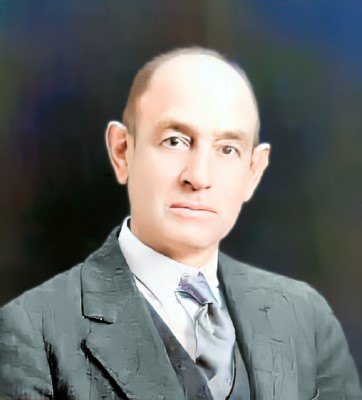
The timekeeping aspects of quartz crystals were discovered by Walter Guyton Cady in the early 1920s. Cady found that quartz can resonate with less equipment and better temperature stability than steel resonators, which were used in radio engineering at the time. This discovery led to the development of quartz clocks.
Quartz clocks use an electronic oscillator regulated by a quartz crystal to keep time. This crystal oscillator creates a signal with a very precise frequency. Quartz clocks and watches are at least an order of magnitude more accurate than mechanical clocks. Generally, some form of digital logic counts the cycles of this signal and provides a numerical time display, usually in units of hours, minutes, and seconds.
In a quartz clock, a piece of quartz crystal is cut and used in an electronic circuit where
it vibrates at a certain frequency (usually 32,768 Hz). The frequency is counted
by
dividing it by 32,768 to equal one second 'ticks'. By dividing a high frequency down
to a low frequency, the accuracy can be increased.
When I was in grade school, we heard about the relatively new atomic clock
.
The concept of the atomic clock was proposed by Isidor Rabi, a physics professor at Columbia University,
in 1945. The world’s first atomic clock, based on ammonia, was announced by Harold Lyons,
the Microwave Standards Section Chief at NBS (National Bureau of Standards, now the
National Institute of Standards and Technology), and his team in 1949. The first practical
accurate atomic clock with caesium atoms was built at the National Physical Laboratory
in the United Kingdom in 1955.
An atomic clock is a timekeeping device that uses the vibrations of atoms to measure time with extreme precision. The International System of Units (SI) defines the second as the time it takes a caesium-133 atom in a precisely defined state to oscillate exactly 9,192,631,770 times.
Atomic clocks are used in a variety of applications. They provide the standard for International Atomic Time (TAI), which is maintained by an ensemble of atomic clocks around the world. They are also used for navigation by satellite networks such as the European Union's Galileo Programme and the United States' GPS. The timekeeping accuracy of the involved atomic clocks is important because the smaller the error in time measurement, the smaller the error in distance obtained by multiplying the time by the speed of light.
That Google Maps works as you drive around in your car proves how well this works.
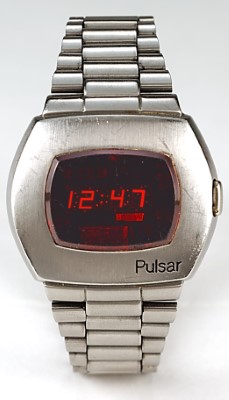
The world’s first commercial electronic digital wristwatch was introduced by the Hamilton Watch Company in 1972, and as you can imagine they were expensive. The watch, known as the Pulsar, retailed for $2,1001. This marked the beginning of a new era in timekeeping, with digital watches becoming increasingly affordable and widespread by the end of the 1970s
<
But even with digital watches and the atomic clock, there was nothing to connect them
to an external reality. No matter how expensive your watch, or its mechanism,
unless you actually owned an atomic clock of your very own, you only knew
approximately what time it was. This was even codified into Segal's Law, published
in a 1930 issue of the San Diego Union, paraphrased as,
It's possible to own too many things. A man with one watch always knows what time it is;
a man with two is never certain.

In order to have a truly accurate clock, whether you own one or a thousand of them, you need two things:
- One official time standard
- The ability to broadcast that standard to the clock, and for the clock to receive that broadcast
Coordinated Universal Time (UTC) is the primary time standard by which the world regulates clocks and time. The concept of universal time was first conceived in the late 1800s, when rail and shipping lines connected the world and standard timetables were necessary for coordinating economic activity, but the coordination of time and frequency transmissions around the world didn't begin until January 1, 1960. UTC was first officially adopted as CCIR Recommendation 374, Standard-Frequency and Time-Signal Emissions, in 1963; but the official abbreviation of UTC and the official English name of Coordinated Universal Time (along with the French equivalent) were not adopted until 1967.
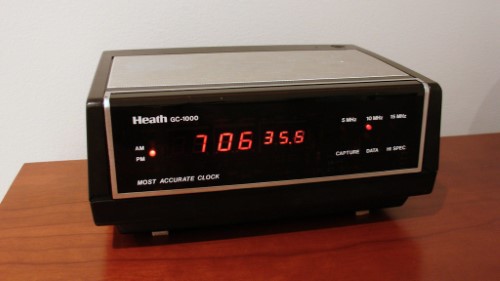
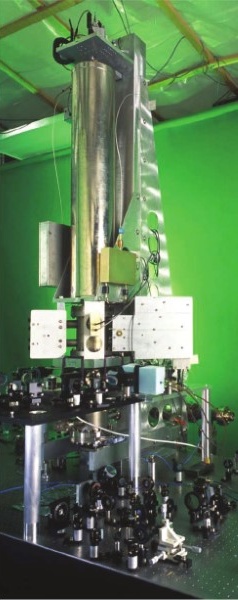
The concept of a radio-controlled clock is nearly as old as the concept of radio itself.
The first radio time signal is believed to have been broadcast in 1903 by the United States Navy,
using a clock located at the United States Naval Observatory (USNO) site in Washington, DC.
However, radio-controlled clocks were not made available to the average consumer until much later.
Heathkit offered one of the first consumer-available radio clocks in late 1983.
Their model GC-1000 Most Accurate Clock
received shortwave time signals from
radio station WWVB in Fort Collins, Colorado. It automatically switched between
WWV’s 5, 10, and 15 MHz frequencies to find the strongest signal as conditions changed
through the day and year.
The advent of cellphones brought a significant advancement in timekeeping. Cellphones get their time from the carrier, which is synchronized with Coordinated Universal Time (UTC) and adjusted according to the local time zone.
The ability for cellphones to automatically update their time from the carrier network has made them incredibly reliable timekeeping devices. This feature ensures that the time displayed on your cellphone is always accurate, regardless of where you are in the world. And with the smartphone addition of GPS, it can even keep up as you drive across time zones.
And smartwatches, which communicate with your cellphone when it's in range and with the carrier cell tower when it isn't, bring that benefit of accurate timekeeping to your wrist.
The official atomic clock, known as NIST-F1, is housed at the NIST’s Physical Measurement Laboratory. This clock was officially adopted as the U.S.’s time standard in 1999. As of 2010, scientists calculated that its uncertainty had been reduced to the point that it will neither gain or lose a second over the course of 100 million years.
The current version of UTC is based on International Atomic Time (TAI) with leap seconds added at irregular intervals to compensate for the accumulated difference between TAI and time measured by Earth's actual rotation. Leap seconds are inserted as necessary to keep UTC within 0.9 seconds of the UT1 variant of universal time.
The system has been adjusted several times, including a brief period during which the
time-coordination radio signals broadcast both UTC and Stepped Atomic Time (SAT)
before a new UTC was adopted in 1970 and implemented in 1972. This change also adopted
leap seconds to simplify future adjustments.
The General Conference on Weights and Measures adopted a resolution to alter UTC with a new system that would eliminate leap seconds by 2035. The slowing of Earth’s rotation varies irregularly, and so the number of leap seconds by which UTC must be retarded to keep it in epoch with UT1 cannot be predicted years in advance.

Now, you may find yourself, caught up in the hustle and bustle of the daily world, wondering what all this has bought us. Wasn't life simpler when we just looked at the Sun's position to tell us when to come home for dinner?
Well, yes. It was also shorter, harder, and less healthy. The increasingly accurate ability to measure time has brought numerous benefits to our society:
- Digital Age:
The accurate measurement of time underpins much of the digital age in which we live. Actually, timekeeping makes the digital age possible, as digital processing chips use internal clocks for everything. Have you ever heard of
CPU cycles
? Those cycles are triggered by pulses from the onboard clock. - Telecommunications:
Precise time and frequency synchronization are necessary for high-speed communication systems. Networks require precise synchronization.
- Global Positioning System (GPS):
Satellite navigation systems rely on timestamped signals to provide us with a precise location of a GPS receiver.
- Financial Transactions:
Timestamping of financial transactions in the banking sector is crucial for maintaining accurate records.
- Scientific Research:
Precise time measurement is essential in many areas of scientific research, including physics and engineering.
- Efficiency and Accountability:
In businesses, time tracking increases transparency into work processes and accountability in employees.
- Regulatory Compliance:
Modern time clocks offer tremendous accuracy, efficiency, and time-saving features. Accurately documenting employee hours worked helps avoid fines and penalties.
The journey of timekeeping from cave paintings to the atomic clock and smartphone is a testament to human ingenuity and our relentless pursuit of precision. The evolution of timekeeping devices, from sundials and water clocks to mechanical and digital clocks, mirrors our own evolution as a society. As we have grown more complex and interconnected, so too has our need for increasingly accurate timekeeping. Today, our world operates on a universally agreed upon, atomic-level precise time standard, enabling advancements in fields as diverse as telecommunications, navigation, finance, and scientific research. This underscores the profound impact that the mastery of time measurement has had on our civilization. It is a journey that continues to unfold, with each tick of the clock opening up new possibilities for exploration and discovery.
The story of time is, in many ways, the story of us. It is a narrative that is still being written, second by precise second.






